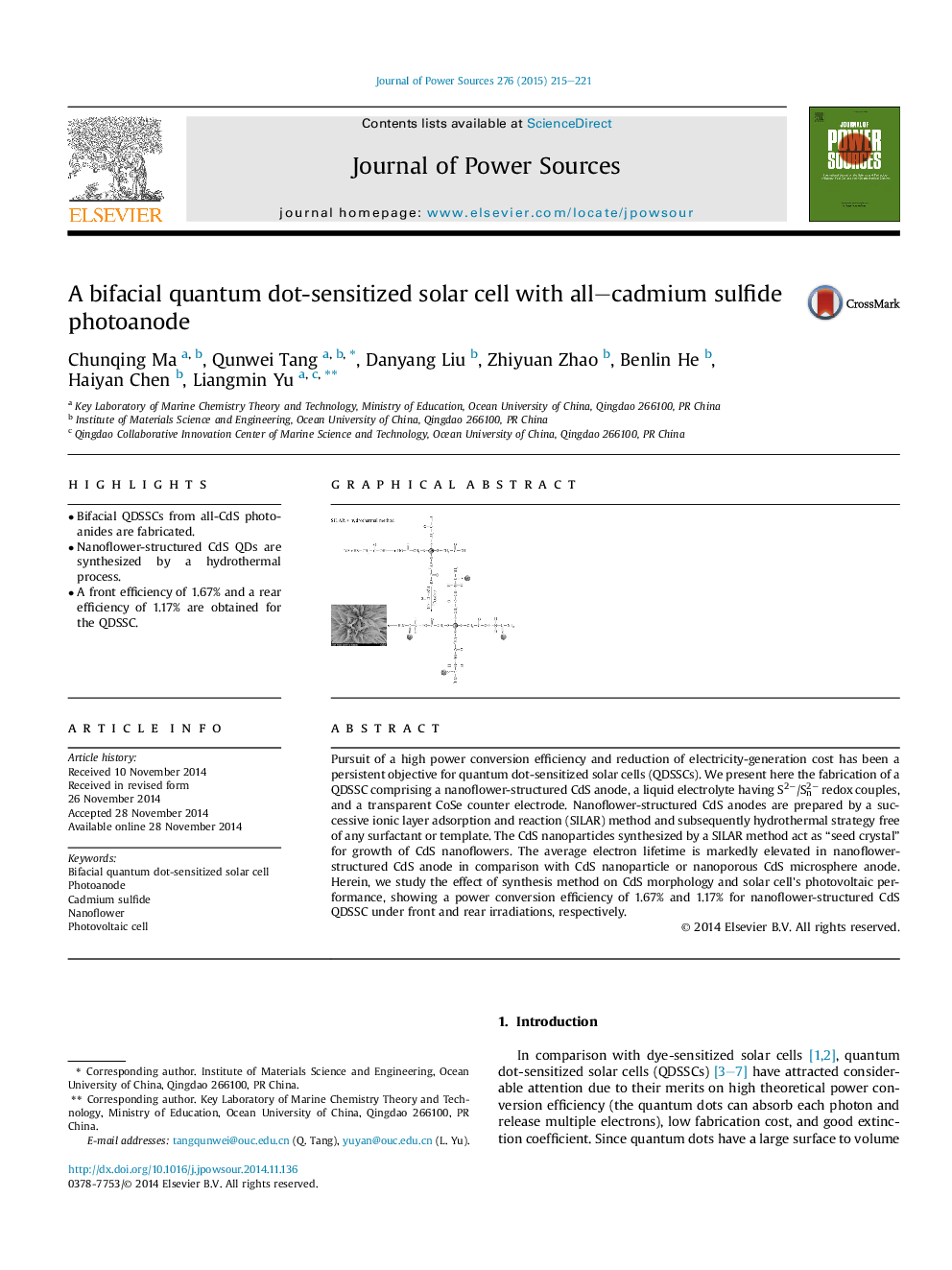| Article ID | Journal | Published Year | Pages | File Type |
|---|---|---|---|---|
| 1292945 | Journal of Power Sources | 2015 | 7 Pages |
•Bifacial QDSSCs from all-CdS photoanides are fabricated.•Nanoflower-structured CdS QDs are synthesized by a hydrothermal process.•A front efficiency of 1.67% and a rear efficiency of 1.17% are obtained for the QDSSC.
Pursuit of a high power conversion efficiency and reduction of electricity-generation cost has been a persistent objective for quantum dot-sensitized solar cells (QDSSCs). We present here the fabrication of a QDSSC comprising a nanoflower-structured CdS anode, a liquid electrolyte having S2−/Sn2− redox couples, and a transparent CoSe counter electrode. Nanoflower-structured CdS anodes are prepared by a successive ionic layer adsorption and reaction (SILAR) method and subsequently hydrothermal strategy free of any surfactant or template. The CdS nanoparticles synthesized by a SILAR method act as “seed crystal” for growth of CdS nanoflowers. The average electron lifetime is markedly elevated in nanoflower-structured CdS anode in comparison with CdS nanoparticle or nanoporous CdS microsphere anode. Herein, we study the effect of synthesis method on CdS morphology and solar cell's photovoltaic performance, showing a power conversion efficiency of 1.67% and 1.17% for nanoflower-structured CdS QDSSC under front and rear irradiations, respectively.
Graphical abstractFigure optionsDownload full-size imageDownload as PowerPoint slide
